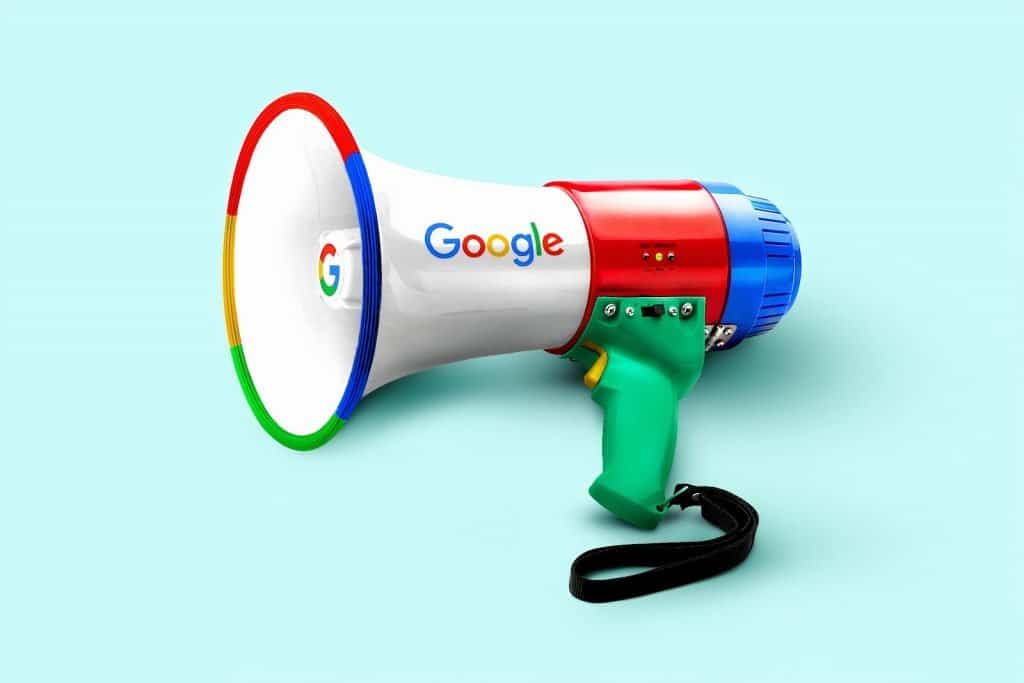
I’ve said it before and I’ll say it again: Smart Shopping is the single-greatest advertising mechanism that Google has given eCommerce merchants in the history of advertising.(That is, if you know how to do it right.)
A lot of agencies, and even some top industry thought leaders, will tell you that Smart Shopping doesn’t work, that it limits your control over your advertising, that it doesn’t provide enough data, and so on and so forth.
But like anything that’s relatively new, Smart Shopping just requires a little patience.
First, a quick refresher: What is Smart Shopping?
Smart Shopping is a campaign type offered through the Google Ads platform that uses machine learning to drive conversions and maximize return on ad spend (ROAS).
With Smart Shopping campaigns, Google uses past consumer purchase behavior to actively seek out shoppers who are most likely to purchase a product and who are ready to make that purchase now.
Then, it brings the most relevant ads directly in front of those shoppers using every advertising platform inside of the Google ecosystem—a method that has proven wildly effective.
Solutions 8 Best Practices: How to get stellar results with Smart Shopping
As I mentioned before, a lot of advertisers are quick to point out the disadvantages of Smart Shopping. Yes, all optimizations are performed automatically by Google, and this somewhat limits the control of the advertiser, but what it lacks in terms of control and visibility, Smart Shopping more than makes up for in explosive ROAS numbers time and time again.
In fact, Solutions 8 has helped countless clients in a wide range of industries exceed their ROAS goals by leaps and bounds after implementing Smart Shopping.
So, how did we do it?
How did we crack the code of Smart Shopping and create the results we wanted to see?
I laid it all out in my YouTube video, but the following is the abridged version.

First things first, don’t always listen to everything Google tells you to do.
For example, Google says:
- You need at least 20 conversions over the last 45 days in Standard Shopping (false; this has not been the case for any of the Smart Shopping campaigns we’ve run)
- You have to have a site tag and remarketing list with at least 100 users (not entirely accurate, since dynamic prospecting is creating a list on its own)
- You should give your campaign at least 45 days to see proper results (true; in fact, we recommend at least 60 days)
- You should keep your product feed up to date (true; see Action Item #3 below)
- You should not run Smart Shopping and Standard Shopping campaigns together (true; we recommend just pausing your Standard Shopping campaigns)
- You should not run remarketing campaigns alongside Smart Shopping (false; this is actually how Solutions 8 has been able to produce some of the amazing results we’ve seen)
- You should use just one Smart Shopping campaign for all of your products (false; see Action Item #5 below)
Here’s the analogy I like to make: If you picture Google as a sled dog, most advertisers are carrying that sled dog on their backs while trying to drive the sled themselves. In other words, they are not using Google to its highest and best potential.
Bottom line: You want to use Google for what it’s good for, direct the process where necessary, and always be sure to use all of Google (and not just cherry-pick certain parts).
So, how do you do that?

ACTION ITEM #1: CONVERSION TRACKING
This is the most important thing—not just with Smart Shopping but with any Google Ads campaign—and it shocks me how many people get this wrong, especially agencies.
Basically, your Google sled dog is not going to know that it did anything right unless you tell it through conversion tracking. And if you’re not tracking all of your conversions, you’re not giving Google a complete picture of what is going on.
Also make sure Conversion Value is enabled so you don’t make the mistake of over-reporting your conversions or tracking the wrong things as conversions. (For example, the Shopify eCommerce platform will count things as conversions that are not technically conversions, such as Page View, View Item, and Add to Cart.)
ACTION ITEM #2: DON’T MAKE ASSUMPTIONS
So many clients come to us with assumptions about what is going to be their best-selling product or the one consumers will really want, and they’re wrong at least 50 percent of the time.
Instead of pushing your agenda on Google, allow it to do what it does best. Include your entire product catalog so it can see everything you have to offer, because that’s where Smart Shopping really works; the more SKUs, the better.
In addition, don’t rely solely on Google Analytics conversion data. This is tempting to do because it’s so easy to link your Analytics data with Google Ads, but the problem you’ll run into is that you simply won’t be getting a full view of everything that’s going on.
One of our clients, a medical device company, discovered a whole new line of business that they didn’t even know existed just by following this advice and letting Google take the reins, resulting in a massive chunk of new purchases they weren’t getting before.

ACTION ITEM #3: YOU HAVE TO INVEST IN YOUR PRODUCT FEED
This is crucially important, but Google does not push this narrative nearly enough.
Your product feed is how Smart Shopping determines what your products are and which products to offer. This means that without detailed product information, Google is essentially flying blind.
Always keep your feed up to date (meaning what you say is in stock is really in stock); make sure you provide robust product information (titles, descriptions, details, engaging images); and continually optimize your feed based on the information you receive.
Solutions 8 uses a tool called DataFeedWatch to continually optimize our clients’ data feeds and ensure high-performing campaigns.
ACTION ITEM #4: GTIN
Global Trade Item Numbers, or GTINs, are especially important for Smart Shopping campaigns because these unique product identifiers allow Google to categorize a client’s products better so it can show them to the right people at the right time.

ACTION ITEM #5: BREAK UP PRODUCTS BY ROAS
This flies in the face of what Google recommends, but hear me out.
If you have enough SKUs to make this worthwhile, I recommend breaking up your products into three campaigns: low margin, medium margin, and high margin. Since your higher-margin products will have a lower ROAS requirement, this allows you to adjust your target ROAS and assign your budgets according to how you want to distribute your spend across products that have various margins.
However, for businesses with very few SKUs or whose product margins don’t vary enough for it to make sense, this action item can be ignored.
ACTION ITEM #6: RUN SMART SHOPPING ALONE FIRST, THEN PHASE IN ADDITIONAL CHANNELS
Smart Shopping can capture buying signals from ANY traffic source, which is very helpful once a campaign has plateaued.
Run Smart Shopping alone first to establish a baseline so you know what your ROAS/purchase volume is going to be, then incorporate other traffic channels (e.g., Facebook, email marketing, affiliates) to give Smart Shopping more predictive indicators of intent, which in turn will allow it to go out and get more look-alike purchases.
Finally, when running Smart Shopping campaigns, always do this:
✅ Run a brand campaign
✅ Run a dynamic remarketing campaign (in spite of what Google says)
✅ Use time decay as a conversion attribution model
✅ Include a lifestyle ad/image in your Smart Shopping ad(s)
and never do this:
<
span style=”font-size: 12px;”>❌ Increase budgets (until at least day 30)
❌ Scale at a rate faster than 10% of daily ad spend (increase on a weekly basis, despite what Google says)
❌ Start with a ROAS goal (instead, add your ROAS goal 45 days after implementation)
❌ Pause your campaigns
Want more tips on winning with Google Smart Shopping?
A dedicated Google Ads agency, Solutions 8 offers an in-depth video series to help businesses create high-performing Google Ads campaigns using tools like Smart Shopping. You can check out those videos here or contact Solutions 8 today for your FREE growth plan.
Author
Patience is the former director of marketing and communications for Solutions 8. A phenomenal content writer, copywriter, editor, and marketer, she has played a prominent role in helping Solutions 8 become an authority in the Google Ads space. Patience is also the co-author of The Ultimate Guide to Choosing the Best Google Ads Agency and You vs Google.
 Patience Hurlburt-Lawton
Patience Hurlburt-Lawton










